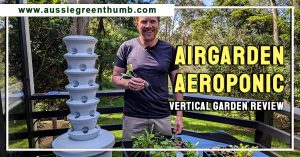Self watering pots really are a worthy investment when it comes to garden solutions. They’re easy to build/buy, easy to maintain and can quickly improve your plant health and help you to avoid a pesky root-rot problem.
Looking for a solution to help make your plant watering easier and more consistent?
More...
Premium Choice

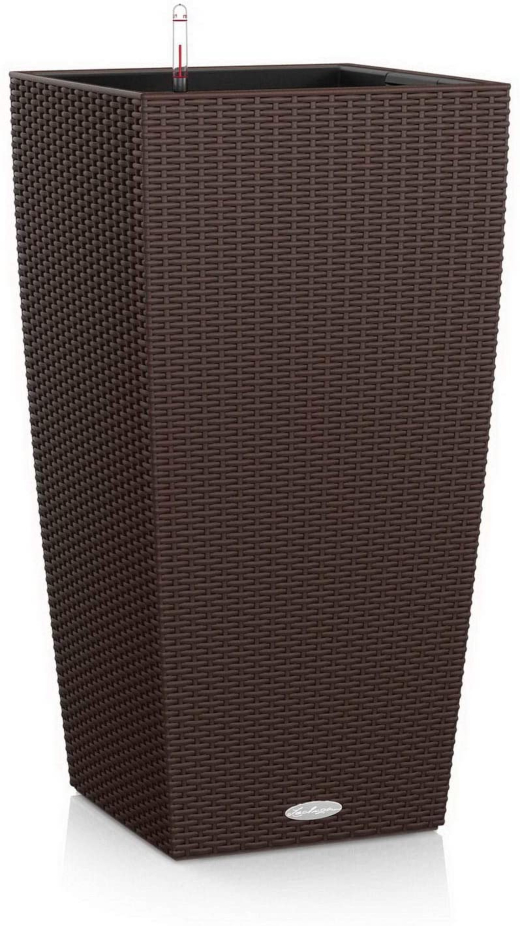
Product | Our Rating | Price | |
|---|---|---|---|
1. Lechuza Large Self Watering Pot | 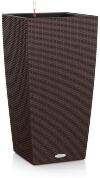 |  | |
2. Lechuza Self Watering Pot |  | ||
3. Cole And Mason Herb Keeper |  | ||
4. GlowPear Urban Garden Self Watering Planter | 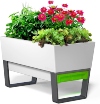 | ||
5. Keter Urban Bloomer 12.7 Gallon Raised Garden Bed |  | ||
6. PlanterHoma 2 Pack Large Self Watering Pot | 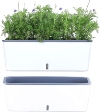 |
Here’s our complete guide so you know what to look for when it comes to self-watering planters.
What are Self Watering Pots?

Source: Amazon
Also known as sub-irrigation containers, self-watering planters are a great buy for novice and experienced home gardeners.
While they won’t work well outside, they’re an ideal option for indoor plants. Self watering pots work particularly well for smaller, leafy indoor plants like Baby’s tears, ferns or lilies.
They also work remarkably well with herbs. Self watering pots are fairly easy to construct, but there are some wonderfully stylish, commercial options available on market that are ready to use.
Do Self Watering Pots Really Work?
When used correctly, self-watering planters are incredibly effective at maintaining moisture levels and providing your plants with just the right amount of water that they need.
Now, these pots don’t actually water themselves, they merely support a watering reservoir system that allows your plant to draw up the water they need.
For maximum effectiveness, regulate the water in the reservoir to avoid overfilling or excessive dry spells.
Using water soluble fertilisers for the water in the reservoir is also a great way to guarantee your plants pick up all the valuable nutrients they need.
How Self Watering Planters Work
There are 4 basic elements that you’ll find across most kinds of self-watering planters, which are:
- The Growing Bed. The growing bed is the main container which houses the soil and plants.
- The Potting Soil. This is the soil that goes in the growing bed. It is recommended to use a lightweight, super-absorbent soil mixture.
- The Water Reservoir. This is the space underneath the growing bed. Modern self-watering pots will have a pipe outlet which allows you to regulate and fill your reservoir.
- Foot or Wicking System. This refers to the system that allows your plant to absorb the water from the reservoir.
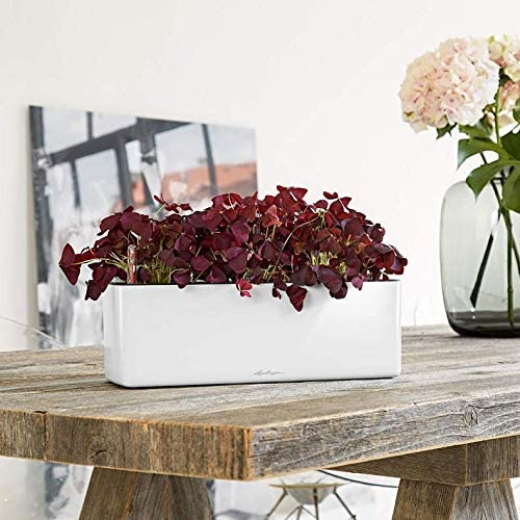
Source: Amazon
There are two types of systems that enable your plant two draw up water:


Get Your Free Guide:
Master Growing Australian Natives eBook
A Must Have Complete Guide for Every Australian Garden
Get Your Free Guide:
Master Growing Australian Natives eBook
A Must Have Complete Guide for Every Australian Garden
How Long Do Self-Watering Pots Work?
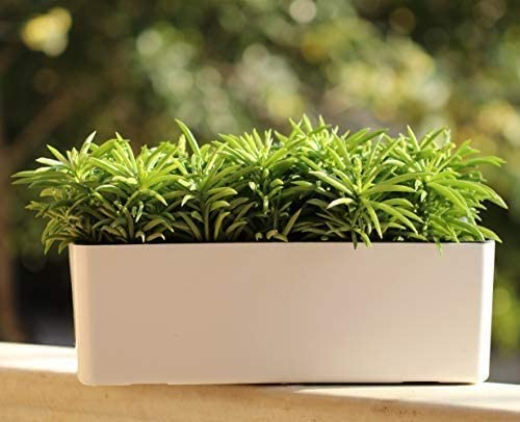
Source: Amazon
Once your reservoir is filled, your self-watering pot will for as long as a week without any other attention. Obviously, in particularly humid or moisture-rich climates, this can be extended significantly.
As there are no real mechanics involved, a self-watering garden can last you a lifetime when maintained properly.
Self Watering Planter Reviews
There are many stylish options available on market that are the best self watering pots. These pots are manufactured to help you easily and effectively regulate your water.
Plus, some of them hide the mechanism so effectively that you won’t even notice it’s a self watering garden. Here’s our top picks when it comes to self watering planters:
1. Lechuza Large Self Watering Pot

Source: Amazon
This terrifically tall planter is great for outdoors, on your patio or in your garden.
Reaching 76.2 cm in height it’s beautifully patterned self-watering planter that can fit into your home garden aesthetic.
It’s also lightweight so easy to maneuver and move around.
2. Lechuza Self Watering Pot
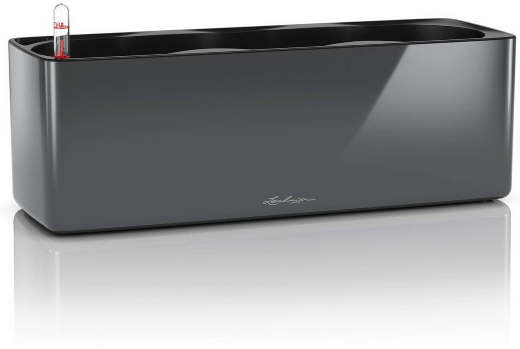
Source: Amazon
Not only does this self watering pot come in a variety of cool colors, but it’s super lightweight and elegant. The incorporated system generates maximum oxygen and moisture to ensure fast growing plants, plus a sleek water meter so you can make sure your plants stay happy.
With award-winning design, this pot is ideal for your home, office and even outdoors.
3. Cole And Mason Herb Keeper
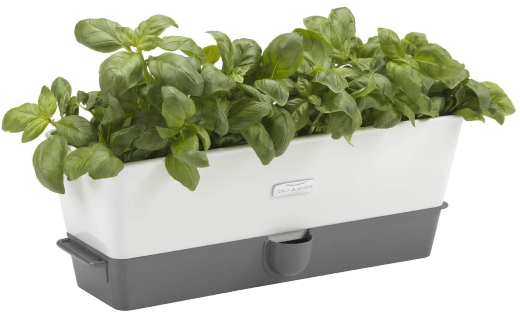
Source: Amazon
This low maintenance, plastic planter pot Is perfect for window sills and counters. Plant multiple pretty plants or herbs in this minimalist design planter. It comes with a hydro-felt pad ideal for plant self-absorption. A highly-functional planter for any space.
4. GlowPear Urban Garden Self Watering Planter
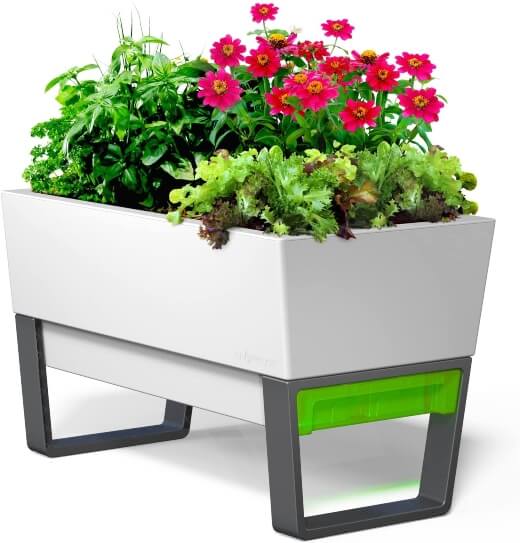
Source: Amazon
GlowPear makes some of the most attractive contemporary planters on the market, this large self watering pot included. The Urban Garden planter comes in four sizes, with the biggest able to accommodate around 60-70 litres of compost for use as a self watering vegetable planter, or as a statement pot in a modern garden layout.
GlowPear’s water reservoir is easy to fill, tops up with rain water by itself, and with a built in water gauge you can check the moisture levels easily without taking the full tray out from underneath.
5. Keter Urban Bloomer 12.7 Gallon Raised Garden Bed
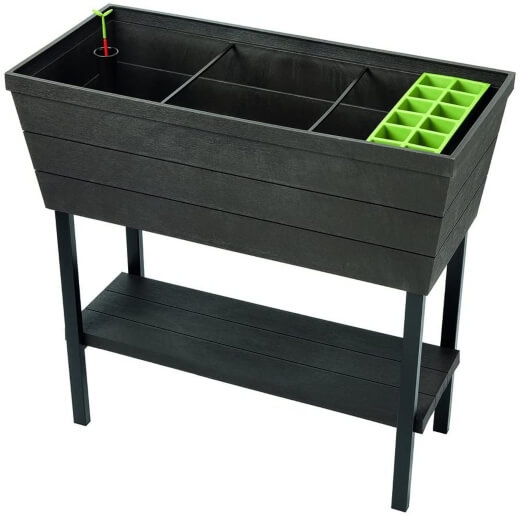
Source: Amazon
Keter raised large self watering planter bed has generous planting space and a dedicated self watering section specifically for propagation. It’s simple raised design is perfect for small gardens, balconies or greenhouses, and comes with a storage shelf for extra pots, seed boxes or more pots.
The only downside of the Keter planter is that it doesn’t have an automatic overflow like most planters, so will need to be manually drained.
6. PlanterHoma 2 Pack Large Self Watering Pot

Source: Amazon
Using wicks to draw water into the compost from the removable reservoir below means this self watering window pot will never over water your plants, and always keep them dry.
If you accidentally water them when the pot is full, simply remove the main pot to drain and place it back into the outer pot. We’ve always liked wick planters for their simple design, and this one is no different, using simple physics to help you with garden maintenance.
PlanterHoma’s planter is perfect for kitchen herbs, or trailing veg, keeping your crops watered without much need for attention. You won’t find a better value for a large self watering pot than this.
Compared to all rivals, it’s almost half the price, with two planters for the price of one of its competitors.
Best Self Watering Pots in Australia
Premium Choice Self-Watering Pot


The Lechuza Tall Patterned Pot is an eye-catching and stylish choice, making it a great option for a home where you want a statement piece. It’s around 75cm tall, so it’s ideal for bigger indoor plants for your home or office, and the generous reservoir is easy to fill to keep your plants watered.
It’s an all-in-one set, so there’s no assembly or need to buy additional extras – just fill the reservoir, plant your favourite indoor plant, and enjoy!
Self Watering Pots Pros and Cons
So, by now you’re perhaps wondering if a self-watering pot really is worth it. Most significantly, if maintained a self-watering system can help you save a lot of time.
Here’s a quick look at the self-watering pots pros and cons:
Pros
- It Improves Water Drainage. Self-watering pots actually decrease the chances of root rot as water is given more space to drain and is only replenished when needed.
- It’s Resource Efficiency. You can make sure your plant is actually making use of the water you give it and as such you avoid any waste of water.
- It Encourages Root Growth. Roots will grow looking for the water reservoir, so you’ll find a significant improvement in root growth.
- You’ll Have Healthier Plants. Not only will you avoid rot, but your plants will get only clean water into which you can easily add plant food, fertiliser or salts.
- It’s Convenient. You won’t have to panic, think of the last time you’ve watered and how much to give, simply keep your reservoir at the right level for your plants and the pot will do the rest.
- All Nutrients Remain in Soil. As the water-source is below the plant, valuable minerals and fertilisers are not washed out of the soil with watering.

Source: Amazon
Cons
- Restrictive. Obviously, you can generally only plant one plant per pot. For a full self-watering garden, it can become expensive.
- Soil Temperature Control. Soil temperature can vary far more than if your plants are planted in the ground. Unless UV protected, avoid keeping your pots in full-sun.
- Not an Ideal Outdoor Option. Leaving the soil to be exposed to things like rain, where the water would come from above the Soil, it can cause water-logging and rot.
How Do You Make A Self-Watering Pot?
If you’re a DIY fanatic or not interested in buying a sleek and stylish manufactured pot, you do have the option of making one from home.
You’ll need:
- 1 x Medium to Large Planter Pot
- 1 x 15 cm Overflow Pipe (Plastic or Metal)
- 2 x Recycled Plastic Bottles (To fit horizontally at pot base)
- 1 x Watering Pipe (about 4cm in diameter)
- Scrap shade cloth or weed guard.
- A drill.
Step by Step Procedure
- Seal the holes at the base of the pot. Be sure the seal is airtight to avoid any water leakage.
- Drill a large hole just above the line where the reservoir would start for the overflow pipe. Insert the pipe into the hole so approximately 7.5cm are inside the pot and 7.5cm are sticking out of the pot.
- Drill small holes all over the plastic holes. The number or holes and size will depend on what you’re planting. For plants that prefer dry soil, do smaller holes and less of them. Then, place horizontally at the base of the pot.
- Cover the bottles with a few layers of shade cloth, ensuring to tuck the sides. Your aim is to avoid allowing any soil into the reservoir. Still, you won’t want it to be overly thick, either.
- Make a hole in the cloth for the watering pipe and insert it vertically into the hole. Securing the base between the two bottles.
- Fill the rest of the pot with soil, leaving the watering pipe visible.
- Plant seeds or seedlings, fill up your reservoir, and you’re ready to go!
Self Watering Pots Frequently Asked Questions
Are self watering pots any good?
Self watering pots are great for any moisture loving plant that won’t mind constantly damp conditions. Some tropical plants adore self watering planters for that reason, but stick to forest floor plants or bog plants to get started and move on to more complex plants like herbs and vegetables when you’re used to the system.
Do self watering pots work?
Self watering pots are really effective and work well to maintain moisture levels. They are great for anyone who's going on holiday for extended periods too and will tide your plants over while you’re away.
What do you put in the bottom of self-watering pots?
Most self watering pots are pre-built so don’t need much setting up, but it’s good to put some coir fabric or jute into the bottom of the pot to prevent soil from leaching into the water reservoir and blocking the holes.
How do self watering pots work?
Self watering pots can work in a few different ways. Some use a ‘wick’ of rope, or porous material to carry moisture from a reservoir up into the soil, which adds moisture when the soil dries out (great for plants that like slightly less moisture).
Others use a reservoir, where the roots actively grow down into the water. These will need aerating, either by regularly changing the water, or adding tablets or tank filters.
How often do you top up water in a self watering planter?
Change the watering in your self watering planter as often as possible. You won’t over water your plants by doing it, and the more often you change the water the less time it has to stagnate, which is the most common problem with self watering planters.
Moisture loving plants, like tomatoes and salads, can drink full reservoirs in under a week too, so check regularly.
How do I convert a planter to self watering?
To convert a planter to self-watering, all you need is a plastic box with a lid. Add a drainage hole or accessible plug to the base of the reservoir, and make sure it is accessible from outside the planter, then add a funnel or watering tube to the top which is above soil level to top up your water.
Add holes to the top, then lay jute over the lid to stop soil from falling in. It’s really that simple.
Does bottom watering help with over watering?
Bottom watering your plants, i.e. using a reservoir, self-watering planter, or standing pots in water massively reduces the risk of over watering. By bottom watering, you allow the soil in each container to soak up everything it needs, and then allow it to drain. That way, you’ll never over water your plants.
Do you drill holes in self watering pots?
Self watering pots do not need added drainage holes. If you are worried there is too much standing water, or the water needs changing, drain it from the tap or plug, before refilling
How do you automatically water plants while away?
Watering the garden when you’re not home is easy, just set up a tap timer and some soaker hoses. Indoor plants are tougher, but if you invest in, or build, self-watering planters you can keep plants reasonably watered while you’re away without overwatering, or letting them dry out.
What kind of soil is best for self watering containers?
Any potting compost will work in a self watering container, but add some good natural drainage and fibre to the mix to keep your potting medium loose and friable. We use coir fibre here, mixed in at about 1/3 to 2/3 organic peat-free compost.
How deep should a self watering planter be?
Self watering planters should be deep enough to accommodate the roots of your established plants. For house plants, that will vary from plant to plant, but for salads and tomatoes you’ll need at least 20 cm of root space between the rim of the container and the top of the reservoir.
Should I let tap water sit before filling a self watering planter?
Tap water can be used directly on many plants, but there are some quite fragile plants that do not like fluoride from tap water at all. To be safe, leave your tap water in a pan for 24 hours before using it to water plants. If you’ve got a lot to water, fill up a few buckets in advance.
Find more detailed reviews of watering tools in the list below:
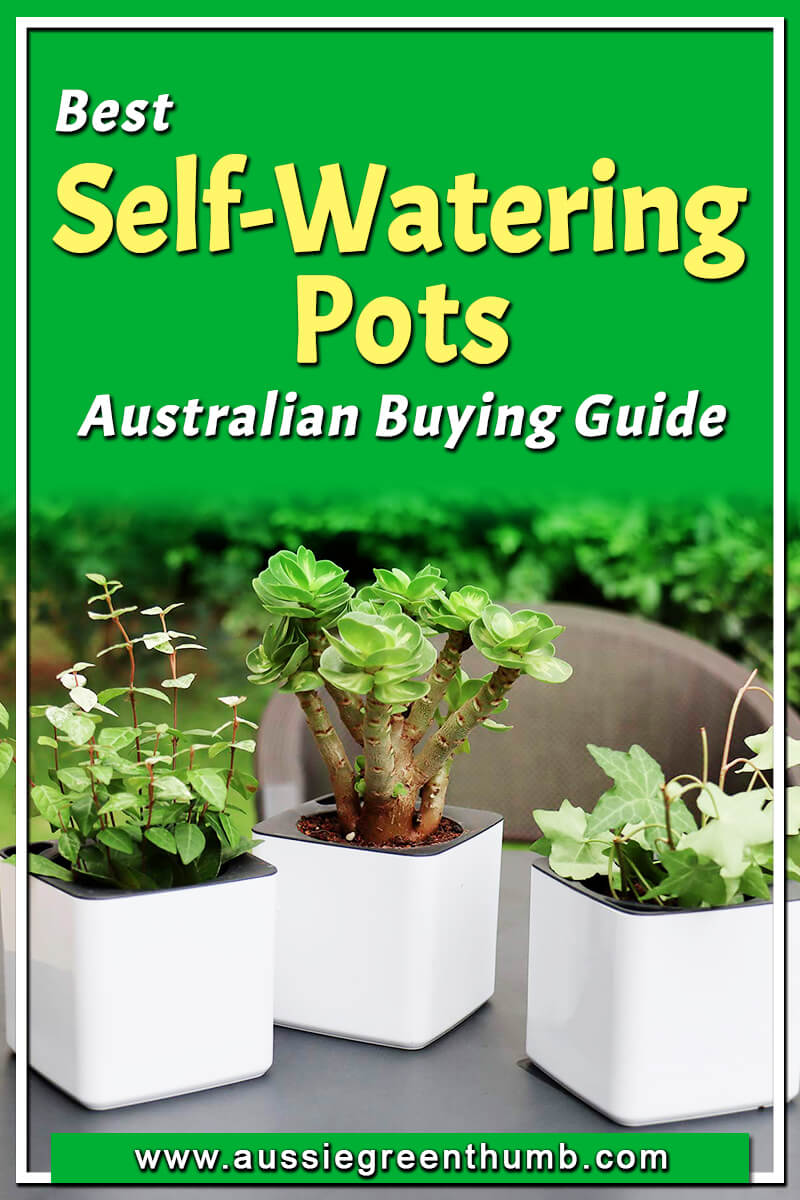
Summing-Up Best Self-Watering Pots for 2025
So, there you have it, everything you need to know about the best self-watering pots and how to use them or even make your own. When weighing up the self watering pots pros and cons, be sure to remember that these pots can last a really long time when looked after properly.
For easy, consistent watering for your indoor plants, invest a self watering pot.
Published on January 28, 2023 by Gary Clarke
Last Updated on December 23, 2025




